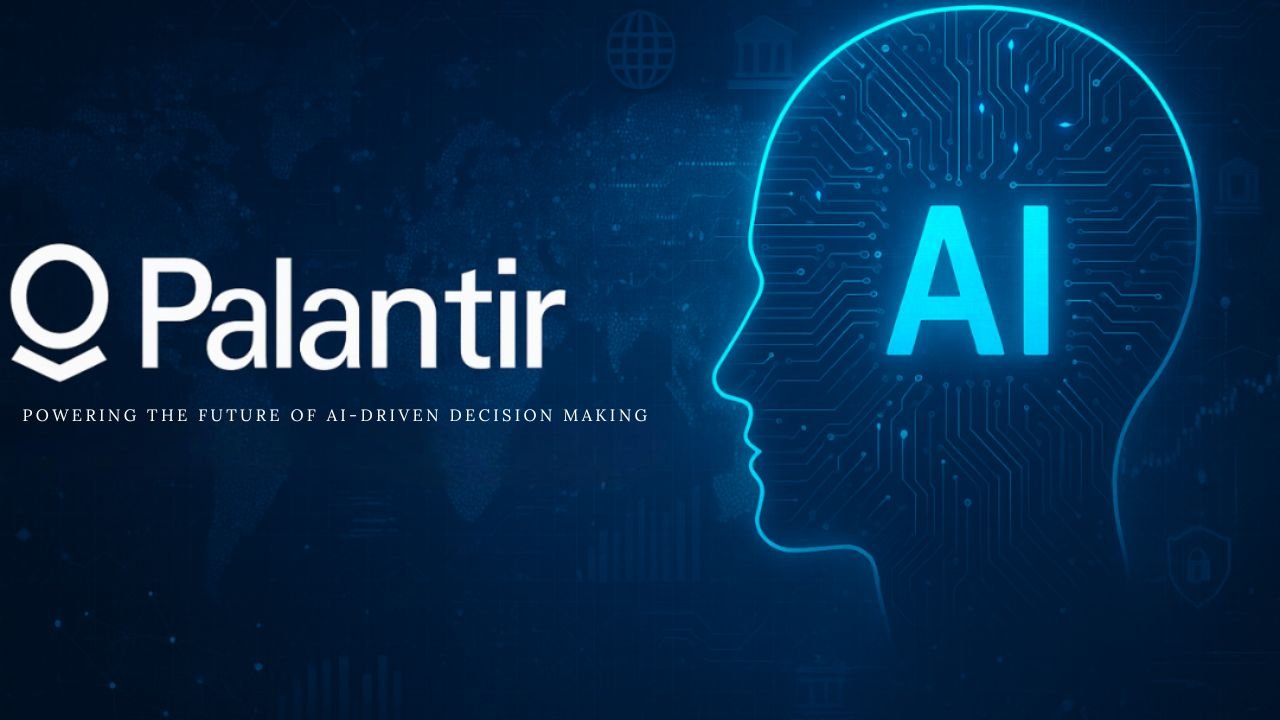
Palantir AIP: Powering the Future of AI-Driven Decision Making
Artificial Intelligence (AI) is reshaping how organizations operate, make decisions, and achieve goals. Among the leading platforms driving this transformation is Palantir AIP — a powerful AI platform built to integrate real-time data, human insights, and machine intelligence into one operational ecosystem. Palantir AIP is used globally by industries and governments to connect generative AI to daily operations, enabling smarter, faster, and more secure decision-making.
Platform Overview
Palantir AIP helps organizations use AI effectively and safely. It brings together three main platforms — Foundry, Apollo, and AIP — to create what Palantir calls an AI Mesh. This combination allows organizations to use generative AI across all environments — from web apps and mobile tools to large-scale industrial systems.
Palantir AIP has already found its applications in such areas as the field of public health, managing energy, manufacturing batteries, and national defense. It assists organizations in creating AI-driven systems, which are responsive, act in real-time, and provide measurable outcomes.
The other important aspect of the AIP architecture is that it is built upon the Palantir Ontology, which is used to convert raw information into information that can be understood and used in making decisions. This implies that the system is not merely a data collection tool but rather knows relationships, actions, and logic, and thus the AI can also make meaning of whatever is happening and help a human make better decisions.
The Palantir Ontology
Ontology is at the core of Palantir AIP. It represents how an organization makes decisions rather than simply storing data. Every organization deals with complex choices daily, and the Ontology connects data, rules, and actions so AI can support those decisions.
Ontology enables bi-directional communication between systems, i.e., data flows through departments and applications with ease. It can automatically relate meaningful information, logic, and actions to form a place where AI and human beings can collaborate effectively.
This allows one to create AI-based operational applications within a short period of time -applications that are able to reason, make predictions, and even suggest optimal moves in real time.
Understanding Decision Components
In Palantir AIP, every decision has three parts — data, logic, and actions.
-
- Data: This represents the facts and context behind every decision.
- Logic: This includes rules, probabilities, and past experiences that guide decision-making.
- Data: This represents the facts and context behind every decision.
- Actions: These are the real-world outcomes triggered by the decisions made.
Palantir AIP ensures that these three components are deeply connected. When combined, they form an environment where human operators and AI agents collaborate effectively.
Working with Data in Palantir AIP
Palantir AIP allows users to connect, clean, and transform data from multiple sources. Real-world data is often messy, incomplete, or unstructured. AIP solves this by providing a Pipeline Builder, which uses large language models (LLMs) to classify, summarize, and extract information from data.
The platform is able to support both structured and unstructured data, which includes text, images, videos, geospatial data, and simulation data. It further provides semantic search to simplify unstructured data in order to access and utilize it.
After having the data in the Ontology, it will automatically create an API gateway and an Ontology Software Developer Kit (OSDK). These tools are used as a sort of bus, which links information throughout the organization.
Logic and AI Reasoning
Logic in AIP defines how data turns into action. It captures the reasoning process behind every decision. This includes mathematical models, business rules, and analytical reports that help decision-makers understand situations.
AIP supports multiple logic systems, including machine learning models, LLMs, and forecasting systems. Models can be developed directly in Palantir or integrated from outside tools. Each model is managed as part of a lifecycle — trained, tested, and deployed within the platform.
The Palantir Language Model Service offers the ability to use multiple providers of the LLM through a single interface so that a user can easily change or compare an AI system. It also has assessment tools used to determine the performance and monitor the model drift as it progresses.
In addition to AI models, AIP also incorporates business logic, including company policies and process rules, that can be used to guide the automated decisions. This reasoning can be linked to the external systems by means of APIs or developed directly in the AIP by its low-code tools.
Actions: Turning Decisions into Results
Once data and logic are combined, AIP enables Actions — real-world implementations of decisions. These actions control how AI and humans interact with external systems, ensuring safe and traceable operations.
Every action in AIP is tied to permissions, meaning organizations can manage who has control over AI systems. This ensures that every AI-driven operation is secure and auditable.
Another important element of the Palantir AIP is the Scenario primitive that enables the user to orchestrate possible results and execute them. An example of this is a manufacturing company that can simulate adaptation in production to examine the effect it would have on supply chains. This allows it to prevent risks and makes the decision-making safer.
AIP also encourages workflows that rely on proposals – where AI proposes actions, but human beings make the ultimate choice. This guarantees a human-in-the-loop solution, which combines automation and responsibility.
Model Development and Integration
Palantir AIP offers a complete environment for developing, testing, and deploying models. Users can code in Python or R, integrate models trained on other platforms, and deploy them securely.
AIP’s goal is to make every model in the enterprise — no matter where it was built — usable within the same ecosystem. It provides continuous monitoring and evaluation, ensuring that deployed models perform reliably and adapt over time.
Building the Ontology
The Ontology would be a combination of data, logic, and actions to form a complete decision-based model of an enterprise. It records the interaction between the people and systems and forms a living picture of the way the organization operates.
This Ontology not only structures data, but it also renders it applicable. An example is a logistics company: they can link the information on deliveries, fuel expenses, and delivery time, and have AI to suggest effective routes and minimize delays.
The Ontology also enables two-way interaction: as users take actions, data is updated in real-time, improving accuracy for future decisions.
Developing Use Cases with Palantir AIP
Palantir AIP helps enterprises build real-world applications using AI quickly. Its low-code/no-code tools enable developers and analysts to design workflows, create alerts, and connect AI logic without deep programming knowledge.
Applications can integrate AIP Logic, allowing companies to build custom workflow agents that assist employees. Developers can also use APIs and webhooks to connect AIP applications to external business systems like CRMs or ERP tools.
With live previews and automated security controls, building operational apps in Palantir AIP is fast, safe, and flexible.
Palantir AIP Platform Overview
| Component | Description | Functionality |
| Foundry | Data operations platform | Integrates, cleans, and models enterprise data |
| Apollo | Software delivery system | Manages deployment and updates securely |
| AIP | AI decision-making platform | Connects generative AI to real-world operations |
| Ontology | Decision model layer | Represents relationships between data, logic, and actions |
| Pipeline Builder | Data integration tool | Uses AI to transform and classify data |
| AIP Logic | Reasoning engine | Integrates models and business rules for decision support |
| AIP Actions | Execution layer | Turns AI decisions into secure, traceable operations |
| Scenario Builder | Simulation tool | Allows “What-if” analysis for safe planning |
| OSDK & APIs | Developer tools | Enable full customization and connectivity |
Conclusion
Palantir AIP is more than just an AI platform — it’s a complete ecosystem for operational intelligence. It allows organizations to use AI not just for insights but for action, turning data into real-world impact.
Palantir AIP supports teams to work with AI safely and effectively by combining data, logic, and action with the help of the Ontology. In the field of healthcare, defense, or manufacturing, AIP is creating a new wave of decision-making with AI and people collaborating.
The fact that it is directly linked to operations, which allows Palantir AIP to be one of the most developed and diverse AI platforms in modern times, makes it a game-changer in the future of intelligent businesses.
Read More About: Palantir News, Nvidia Stock News, and Nasdaq:AMZN – The Latest Insights for Smart Investors


